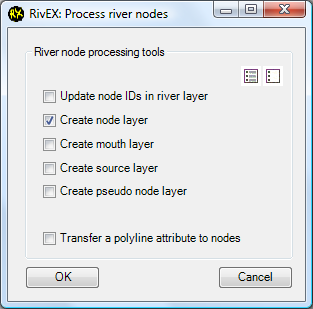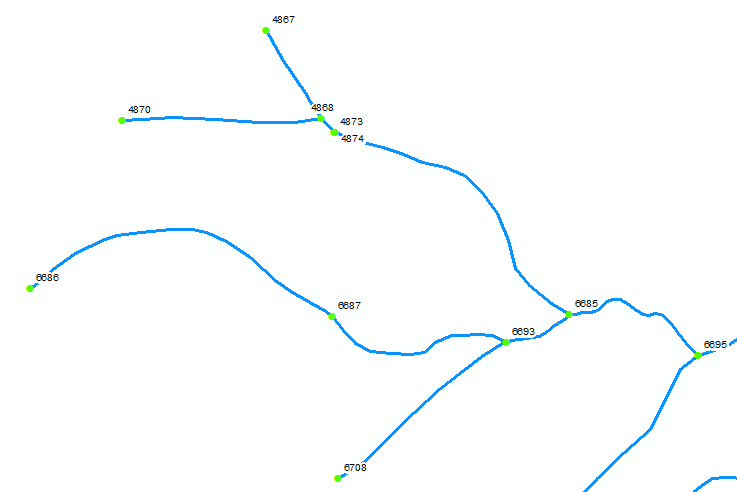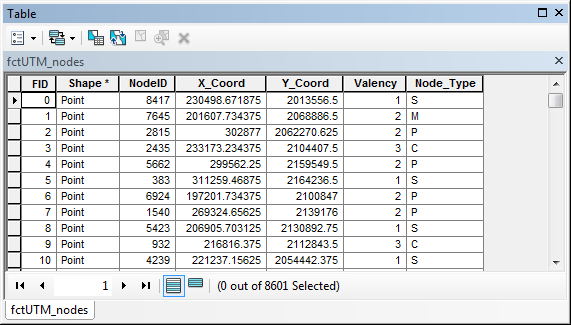Create a node layer
•To create a separate point layer that are the nodes of the network select Create node layer and click OK.

•RivEX will generate a new point layer. It will take on the name of the river network with "_nodes" as a suffix. The layer is stored as a Shapefile in the Output sub-folder in the RivEX_Workspace folder. Below is an example of the node dataset labelled by NodeID.

•If you open attribute table of the new node layer you will see 5 fields.

|
Field name |
Description |
|
NodeID |
The unique ID given to the node |
|
X_Coord |
The X coordinate of the node |
|
Y_Coord |
The Y coordinate of the node |
|
Valency |
The number of polylines connected to the node |
|
RivEX can identify up to six types of nodes and labels them with a single character code |
•The definition of node types are listed below.
|
Code |
Meaning |
Definition |
|
S |
Source |
A node which has no polylines flowing into it. |
|
M |
Mouth |
A node which has no polylines flowing out of it. |
|
P |
Pseudo-node |
A node which has 1 polyline flowing in and 1 polyline flowing out. |
|
C |
Confluence |
A node which has 2 or more polylines flowing in and 1 polyline flowing out. |
|
D |
Divergence |
A node that has 1 polyline flowing in but has 2 or more polylines flow out. |
|
B |
Both confluence & divergence |
A node that has 2 or more polylines flowing into it and 2 or more polylines flowing out. |